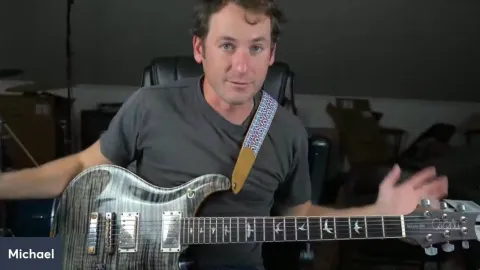Diatonic harmony, harmonizing the maj scale
I maj7, ii min7, iii min7, IV7, V maj7, vi min 7, vii min7b5…
I need to get faster on the changes in all positions. Then target those notes for melodies and improv.


In this masterclass, guitar instructor Michael Palmisano teaches major and minor chord shapes across the neck. He starts by reviewing octave shapes and how they connect to form chord shapes in different patterns. Michael demonstrates the shapes for keys like C, F sharp, and A minor, emphasizing the most commonly used patterns.
Michael stresses practicing the chord shapes with a metronome or backing track to make it more musical. He encourages students to move between the shapes smoothly while picking out each note. Later, a student asks about dominant seventh chords, and Michael provides a detailed explanation of where they are used and how they relate to music theory.
Throughout the masterclass, Michael's goal is to help students internalize chord shapes across the entire neck through repetition and relating them to familiar keys and progressions. He emphasizes practicing in a way that feels musical rather than just as isolated shapes.
Review of octave shapes and how they connect to form chord shapes (0:00-0:11)
Demonstration of chord shapes in C, F sharp, and A minor (0:11-0:32)
Encourages practicing with a metronome or backing track (0:32-0:47)
Explanation of dominant seventh chords and their usage (0:47-0:50)
Diatonic harmony, harmonizing the maj scale
I maj7, ii min7, iii min7, IV7, V maj7, vi min 7, vii min7b5…
I need to get faster on the changes in all positions. Then target those notes for melodies and improv.